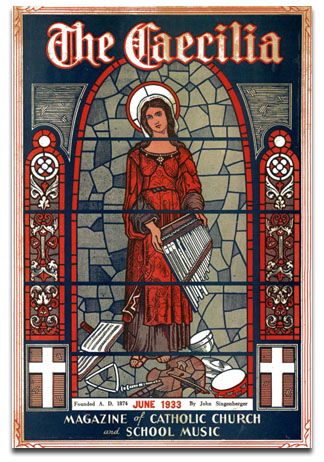We’ve had been thinking about how to discuss the upcoming Sacred Music Colloquium on these pages. It hardly seems suitable to just list faculty members without some discussion of who they are and what they are doing. In particular, we have some new people this year that are going to provide opportunities for learning from a wide range of performance practices on chant. This is already ending up as a series so let us move on:
Charles Cole. Readers of the Chant Cafe might have met him through a post on this site that drew attention to his charming interview on Vatican radio. He discusses what it was like to direct the brass for the Papal Mass at Westminster and also play the organ for the prayer service that follows. He is an experienced chorister and director (and promoter!) of Gregorian chant for one of the most important scholas in the UK.
Here is a biography with all the apparatus you need to know:
CHARLES COLE began his musical training as a chorister at Westminster Cathedral. He went on to win a major music scholarship to Ampleforth and organ scholarships at Exeter College, Oxford and Westminster Cathedral. He directs the Schola Cantorum of the Cardinal Vaughan Memorial School and the London Oratory Junior Choir and also holds positions as Director of Music at Our Lady of Victories, Kensington and Deputy Organist at Westminster Cathedral.
He is Director of the Schola Cantorum of the Cardinal Vaughan Memorial School, a renowned boys’ choir with which he has toured extensively in Europe and the USA and made several recordings and broadcasts. In recent years the choir has performed in Paris, Rome, Venice, Assisi, Cologne, Vienna, Barcelona, Montserrat, New York and Washington DC. The choir has featured on BBC Radio 4 Sunday Worship and BBC TV Songs of Praise. Recordings include Sing in Exultation (Christmas music) and Lauda Sion (Music by Mendelssohn, Dupré, Dvořák, Langlais and Gardiner). In 2005 he was appointed Assistant Organist at Brompton Oratory and Director of the Oratory Junior Choir, which, in addition to its liturgical duties, provides the Children’s Chorus for the Royal Ballet’s productions at Covent Garden.
His own recordings at the organ include Vivaldi’s Beatus vir and Duruflé’s Requiem, the music for an award-winning Volkswagen Polo TV advert, contributions to the Rhinegold Dictionary of Music & Sound and two CDs of contemporary church music by John Streeting and Jonathan Willcocks. He has also played on a number of radio and television broadcasts including a live broadcast of Midnight Mass from Westminster Cathedral and at the Installation of Vincent Nichols as Archbishop of Westminster (BBC television). He has played at many prestigious venues in London including Westminster Abbey, St Paul’s Cathedral and the Royal Albert Hall for a Prom with Jeremy Summerly and the Oxford Camerata.
In September 2010 his two children’s choirs, the Cardinal Vaughan Schola Cantorum and the London Oratory Junior Choir, joined forces to sing in a performance of the Monteverdi Vespers with the Monteverdi Choir conducted by Sir John Eliot Gardiner at the Royal Albert Hall as part of the BBC Proms. Two further performances took place at The Sheldonian, Oxford and Durham Cathedral. Charles was involved in two of the Papal Liturgies on the occasion of Pope Benedict XVI’s visit to London, conducting London Brass in James MacMillan’s Tu es Petrus, commissioned for the Mass at Westminster Cathedral and playing the organ for the Prayer Vigil at Hyde Park which attracted a congregation of 80,000. Charles conducted the Children’s Chorus for the soundtrack of Harry Potter and the Deathly Hallows (Part 1) released in November 2010.




